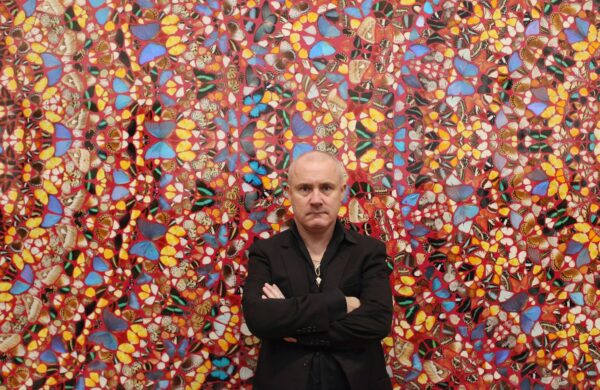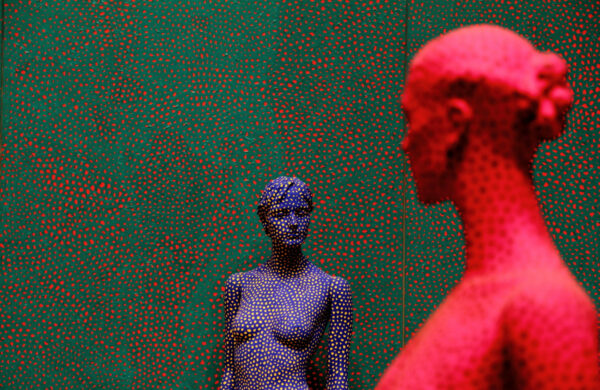Does The Artist Still Own The NFT?
An NFT (non-fungible token) denotes an individual’s digital assets and a certificate of authenticity stored on the blockchain. NFTs are crucial to the art industry because they help artists track their official work and show subsequent and current owners of the pieces. Does an artist still own the NFT?
The ownership of NFT is quite complex since it is dependent on some aspects. In most cases, NFTs belong to original artists and not art buyers, but there is an exception to this. People can make external agreements to transfer the full ownership of NFT and copyright of an artwork to a buyer after sale. So basically, only original creators are mandated to own NFTs.
It can be pretty exacting to determine the ownership of NFTs, especially in the art industry. Some people even mistake NFTs for copyrights, but the two aspects are different. Hence it is vital to understand NFTs, their functions, and limitations.
I will explore the meaning of NFTs, how to obtain them, and their implications to their owners. NFT is an evolution of digital art collection. NFT can be traced back to 2014 when Ethereum Blockchain launched, but it recently came to light.
What Are NFTs?
NFTs are saleable jpegs that serve numerous functions in the art industry. They make artworks non-interchangeable and unique by storing them in digital ledgers that use blockchain to prove their ownership.
NFTs hold values and have a strong concurrence with cryptocurrencies. However, they are not easily exchangeable because the file stores information that upgrades them higher than standard currency.
People use NFTs to make an original piece of anything unique; it can be a work of art, video, meme, music, or photos. NFTs are not tangible yet tradable; they are files that prove the ownership of original copies of one’s work.
Contemporary artists rely on NFTs because they deem them perfect tools for securing their work and selling them online with minimal risks. Blockchain records all the transactions made on an artist’s work, the people involved in the transactions, and the amount spent.
Unlike NFTs, fungible assets are indistinguishable and interchangeable. For instance, bitcoins are fungible since their value remains the same after a trade. But what about art?
NFTs do not meet the criteria to be copyrighted, but many people tend to confuse them for copyrights. The main reason for this is that both copyrights and NFTs prevent the duplication of original works. It is vital to heed that NFTs do not necessarily transfer the copyright of a piece of work from its owner to a purchaser.
It can be quite challenging to determine the ownership of NFTs since the association of art and NFTs is somewhat complicated since there are numerous overlaps to consider. Therefore, artists and buyers must discern the legal postulations and pitfalls attributed to NFT ownership.
How Do NFTs Work?
NFTs are created or minted from tangible and intangible digital assets like music, tweets, collectibles, art, virtual avatars, designer sneakers, arts, and sports highlights.
One can verify their ownership of an NFT through the blockchain ledger. It doesn’t matter the format of the original work because it is possible to sell GIFs, JPGs, and MP3s like physical art. The price of NFTs is dependent on the market demands.
Today, you can easily find replications of famous artworks in various locations, made possible by NFT. Hence, there are valid blockchains of lesser value than their originals.
If I buy an NFT of a painting, I will not receive the physical portrait but the certificate of ownership of the NFT through a digital wallet. Of course, an NFT can only have one owner at a time. Still, its ownership has limitations, especially if it is under a buyer and not the originator of a digital asset.
NFTs have licenses of the digital assets they represent, but as earlier mentioned, they do not confer copyright ownership.
Blockchain technology is essential to artists because it affords them a unique chance to monetize their work. Artists are not fully dependent on auction houses and galleries. Through NFTs, artists generate more income because they receive a percentage of interest made from every new sale.
How Do Artists Obtain NFTs?
NFTs are sold and bought on specific platforms, just like cryptocurrencies. Many NFT marketplaces include OpenSea, Raible, Axie Infinity, NBA Top Shot Marketplace, Nifty Gateway, and Zeptagram.
As an artist, you should ensure you have a digital wallet to store cryptocurrencies and NFTs. NFT is reliant on cryptocurrency, meaning you will have to buy one. There are many platforms from which artists buy cryptocurrencies using their credit cards. They include PayPal, eToro, Coinbase, and Kraken.
Before opting for a particular NFT market, artists must thoroughly research their options to evade falling victims to fraudsters who may end up selling their work without their knowledge and permission. Thanks to the internet, people can easily get reviews on NFT marketplaces and determine what works for them.
Few individuals have the technical capabilities to make or mint their own NFTs. But to individuals who lack this technological know-how, there are professionals on NFT marketplaces who guide people on the procedure to acquire NFTs.
Should Artists Buy NFTs?
Computerization has made it easy for people to steal artists’ work. For instance, you can go to the internet right now, download a famous artwork, print it, and use it as you deem. However, that piece will be meaningless because the original one is worth millions of dollars.
Whereas some artists find NFTs valuable, others deem them traps. All individuals who opt for online businesses cannot evade the subject of NFTs. They are worthy because they give artists control over their work and destinies.
Many young artists are making millions from NFTs because they understand that by tokenizing their work, they do not transfer their intellectual rights as they can print and showcase their work. Hence, NFTs have numerous financial benefits to their original owners.
NFTs are most convenient for motion-based works and 3D art because they are ideal online compared to physical space. Additionally, artists do not incur extra customs and shipping charges because of their bulk, limiting them to specific geographic locations.
Just recently, there has been a tremendous increase in NFT profits since February 2020; the interests totaled $60 million.
Are There Risks Ascribed to Buying NFTs?
There are some downsides to NFT ownership. First, the futures of NFTs are uncertain since they have not stayed long in the market. It would be wise if artists did not invest a lot of money in NFTs because it is impossible to tell the outcomes. Furthermore, even though some people have gained high profits, some have not.
One can sell an NFT for a lower value than they bought because their value is contingent on clients’ willingness to pay. Similarly, one may be unable to resell an NFT if no one wants it. Hence, demand is a vital aspect of blockchain technology because lack of thereof leads to tremendous financial losses.
NFTs are controllable by capital taxes meaning one may fail to receive long-term capital gains even if they incur high tax rates. Unfortunately, the taxation also applies to cryptocurrencies; hence, buying an NFT might be more costly than most people anticipate.
Therefore NFTs do not guarantee financial interest. However, they are just like any other investment. That is why artists must conduct research and be willing to take risks cautiously in preparation for unpredictable results.
Does The Artist Still Own The NFT?
Original artists own NFTs, and they have the rights to their works. On the other hand, buyers of NFTs only obtain the digital certificate of ownership of artwork, so they have limited rights to the works bought.
What Are NFT Ownership Rights?
According to the Ethereum organization, only one person can own an NFT at a time. NFTs owners can manage their ownership through a unique ID and metadata that one cannot replicate.
If I buy an NFT, I can prove my ownership through a distinctive identifier linked to the cryptocurrency I use. Meaning that all tokens have their owners, and they are easily verifiable.
Through cryptocurrencies like Ethereum, people can also prove their NFT ownership if they sign messages to show they own the private key behind their address. It is impossible to manipulate the ownership of NFT because the private key proves ownership of the original work.
However, there are some cons to NFT ownership. Since there are NFT limitations, do artists own them?
What Are The Limitations to NFT Ownership?
If a creator of an artwork decides to sell their piece to someone else, they can transfer the intellectual property rights of the NFT to the buyer, yet they must document it for future reference. If the two parties do not write it down, NFT ownership does not entirely belong to the buyer.
Buyers of NFTs need to ascertain the owners of their underlying assets this way; they can evade copyright restrictions. In some cases, people spend millions buying NFTs, but they still belong to their creators if they do not obtain permission to use them.
There is a common myth about NFTs- many people believe that once they buy an NFT, they own the work of art it presents. Wrong! I defined NFTs as tokens representing a digital asset and not a physical item. Hence ownership of NFT means owning a token which is different from owning an asset.
NFT original owners can share their works with their audiences since they automatically own the copyright to their work. However, unlike the creators, the buyers’ use of NFT s is quite limited since they do not own other rights to the work.
This rule does not only apply to NFTs. For example, if I buy a physical piece of art, it will be wrong to display it to the public and claim its copyright ownership. Therefore, to use NFTs as one pleases, one must buy the copyrights from the creator or come up with their work of art.
Accordingly, it is essential to note that NFT purchasers are rarely owners since all they have is a unique hash under blockchain technology with a link to the work they bought and a transactional record of their purchase. So, it is wise to tread caution before purchasing an NFT because of its impediments.
Original artists own NFTs unless they decide to fully sign off their ownership rights to buyers, including copyrights. People need to understand this to contemplate the essence of buying tokens for digital assets via blockchain technology.
What Should Artists Consider Before Minting NFTs?
If you want to mint a work of art or any other asset like a tweet or GIF, you must consider and adhere to the rules of copyright law. Hence, you should know that;
- You are the owner of a digital asset’s intellectual property rights unless you are not its creator.
- You can transfer your copyright ownership to a buyer
- You Must obtain permission to mint an artwork if you created it with other individuals
- You must be the creator of the work you want to mint and should not steal other people’s work
- You cannot mint an artwork created under someone else’s authority, especially an employer, since they have the underlying copyright of that piece
- You can create an NFT using someone else’ work if they permit you to do so
- If other artists inspired your artwork, you should not mint it unless you have their consent
Are NFTs Here to Stay?
As much as NFTs have numerous limitations and require people to tread with caution, they have tremendous benefits to artists. High financial rewards make blockchain technology attractive to many artists.
NFTs will become building blocks usable across virtual worlds created by the internet in the future. Soon enough, many people will interact with others in virtual communities, design their works and explore numerous things in metaverses run via NFTs.
The value of NFTs lies in their capability to track the history of an artwork and its creator; thus, this form of digitization will minimize the theft of art pieces online.
I hope you now understand NFT ownership and its limitations. It’s pretty easy to mint and trace NFTs, yet people should be vigilant while buying them. I believe this information will help you decide whether to mint or buy NFT from an artist. If you choose to buy, you should contemplate copyright ownership so you can use your NFT as you please.
References:
https://www.forbes.com/sites/nicolesilver/2021/11/02/the-history-and-future-of-nfts/?sh=d90c4076a163
https://www.livemint.com/technology/nfts-much-hyped-but-how-do-they-work-11639884308143.html
https://thenextweb.com/news/so-you-bought-an-nft-doesnt-mean-you-also-own-it-syndication







